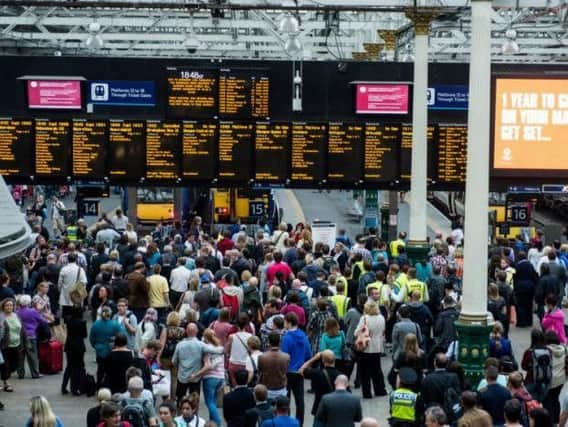Alastair Dalton: Train toilets must be a more of a convenience


On a train journey, these include getting a seat, feeling neither too hot nor too cold – and a clean, working toilet.
For some, the last of these is the most important factor when deciding whether to travel by rail, especially over long distances.
Advertisement
Hide AdAdvertisement
Hide AdHowever, it is often the aspect of train travel that passengers dread the most.
They may well wonder what state they will find the toilet in as they open the door, even if it is still technically usable.
Having “well-maintained, clean toilet facilities on every train” is one of Scottish passengers’ top ten priorities, watchdog Transport Focus has found.
Older travellers, who may need to use the toilet more frequently than others, will rate this particularly highly.
I’ve been told of cases where some elderly passengers have decided to make long journeys by road instead of rail, despite the added safety risk, having been on trains where all the toilets they could get to were out of order. They were understandably worried that the experience might be repeated.
With an ageing population, attending to the needs of older travellers will become an increasingly pressing issue.
However, ScotRail has far to go to bring things to an acceptable standard, according to the latest independent national rail passenger survey.
Only half of those polled were satisfied with the state of the operator’s train toilets, it found this spring.
Advertisement
Hide AdAdvertisement
Hide AdThat compares poorly with 63 per cent for the best-performing cross-Border train firm, Virgin Trains – which runs between Glasgow, Edinburgh and London on the west coast main line – although it has fewer and newer trains than ScotRail.
It is true that ScotRail has been making some improvements – driven primarily by the need to provide toilets large enough for wheelchairs – as it has been upgrading its train fleets.
But it has an opportunity to change things significantly with the introduction next year of two new fleets serving inter-city and some of the busiest urban and commuter routes.
I’m told the delayed Japanese-designed Hitachi trains, which will run on lines such as the main Edinburgh-Glasgow link, will have a new type of accessible toilet that features a “cubicle within a cubicle” so carers can accompany those they are looking after into the toilet without compromising their privacy.
However, on the other fleet, refurbished 40-year-old diesel “High Speed Trains” which will link Scotland’s cities, it’s potentially not such good news.
ScotRail said the number of toilets per carriage will have to be reduced from two to one because there is not enough space to accommodate the fitting of tanks for waste, as it can no longer be flushed onto the tracks under new regulations.
But the operator said the refurbished trains will not have fewer toilets than the trains they will replace. While many toilet problems are caused by thoughtless passengers, it is incumbent on ScotRail to redouble its efforts to make their conveniences less of an inconvenient experience.
Wipes or sprays could be provided to clean toilet seats, bins made larger to cut the amount of paper and other litter finding its way onto the floor, and there could be more frequent cleaning. Half of ScotRail’s passengers still need to impressed – or some will not be coming back.